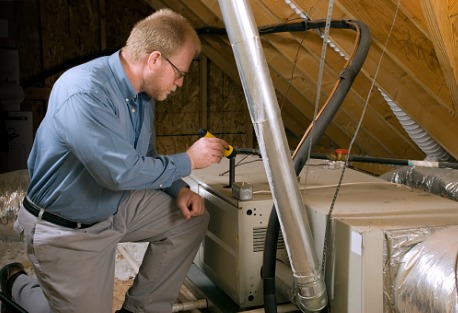How To Save On Heating Costs
It may be tempting to curl up on the couch with a hot cup of tea or a bowl of soup on a cold winter day thanks to the comfortable temperature your heater has made your home. But, home heating can quickly add up to be one of the most utility expenses you face as a homeowner in the winter. Fortunately, the experienced heating technicians at our HVAC company have outlined some ways in which you can lower your home’s heating costs this winter!
Contact Gordon’s Heating & Air today to schedule an appointment or to learn more about our wide range of heating services, including furnace maintenance, heating system installation, and more! Don’t forget to join our Comfort Club for even more benefits!

Change Your Furnace Filters
During the winter, your home’s furnace is one of the biggest users of energy. Similar to your HVAC system, when it has a filter clogged with dirt and dust, it could restrict airflow, making the furnace work harder and less efficiently. We recommend changing your furnace’s filter once every month, along with using a high-efficiency filter to help trap allergens.
Lower Temperature A Thermostat
Lowering your thermostat by a couple of degrees can make a big difference on your heating bill. The Department of Energy estimates savings of about 1-2% for each degree of thermostat adjustment per eight hours. They also recommend turning thermostats back 7-10 degrees from their normal settings for 8 hours per day to lower your heating costs.
Reverse Your Ceiling Fan
Using your fan to keep your home warmer in the winter can help lower your heating costs, as the cost to run the fan is a fraction of what it costs to run the heater. Since hot air rises and cold air sinks, running your ceiling fan in reverse, meaning clockwise, can help push the warm air back down to floor level. In addition, we recommend setting your fan to low, as a low speed will gently push down the warm air without creating uncomfortable drafts.
Insulate Your Windows
The windows of your home lose heat much faster than a wall. By covering your windows with storm windows, adding clear plastic tape to the window frame, or hanging thick insulating curtains or window shades you can reduce the heat loss from your windows at night, saving you money on heating.
Insulate Your Attic
Even though windows lose heat quicker than walls, you can slow heat loss through walls and ceilings by adding insulation. The Department of Energy states that adding insulation to your attic is one of the fastest and most cost-effective ways to reduce energy waste. Be aware that there are several types of attic insulation, so make sure you get the material to meet your needs.
Seal Gaps & Cracks
Small cracks around your windows and doors could let cold air into your home, making it more difficult to keep your indoor temperature comfortable. You can seal these cracks with exterior caulk or foam, which coils make it cheaper to heat your home during the winter. You can also add weatherstripping around your windows and doors for a good seal.